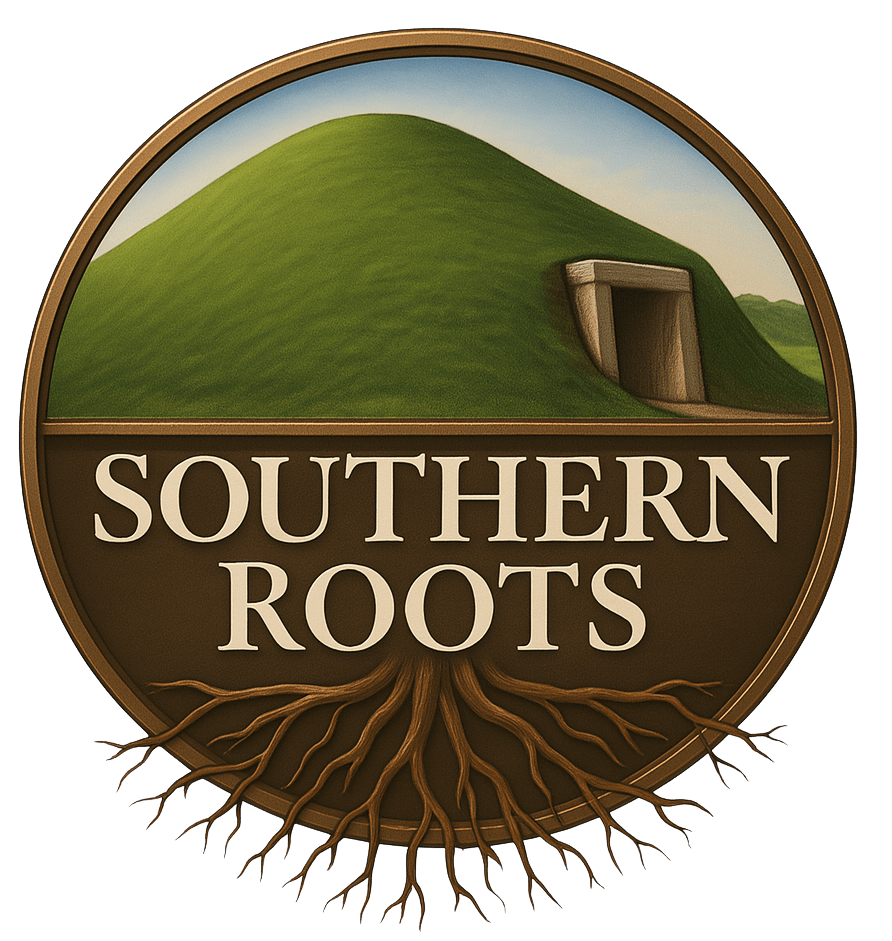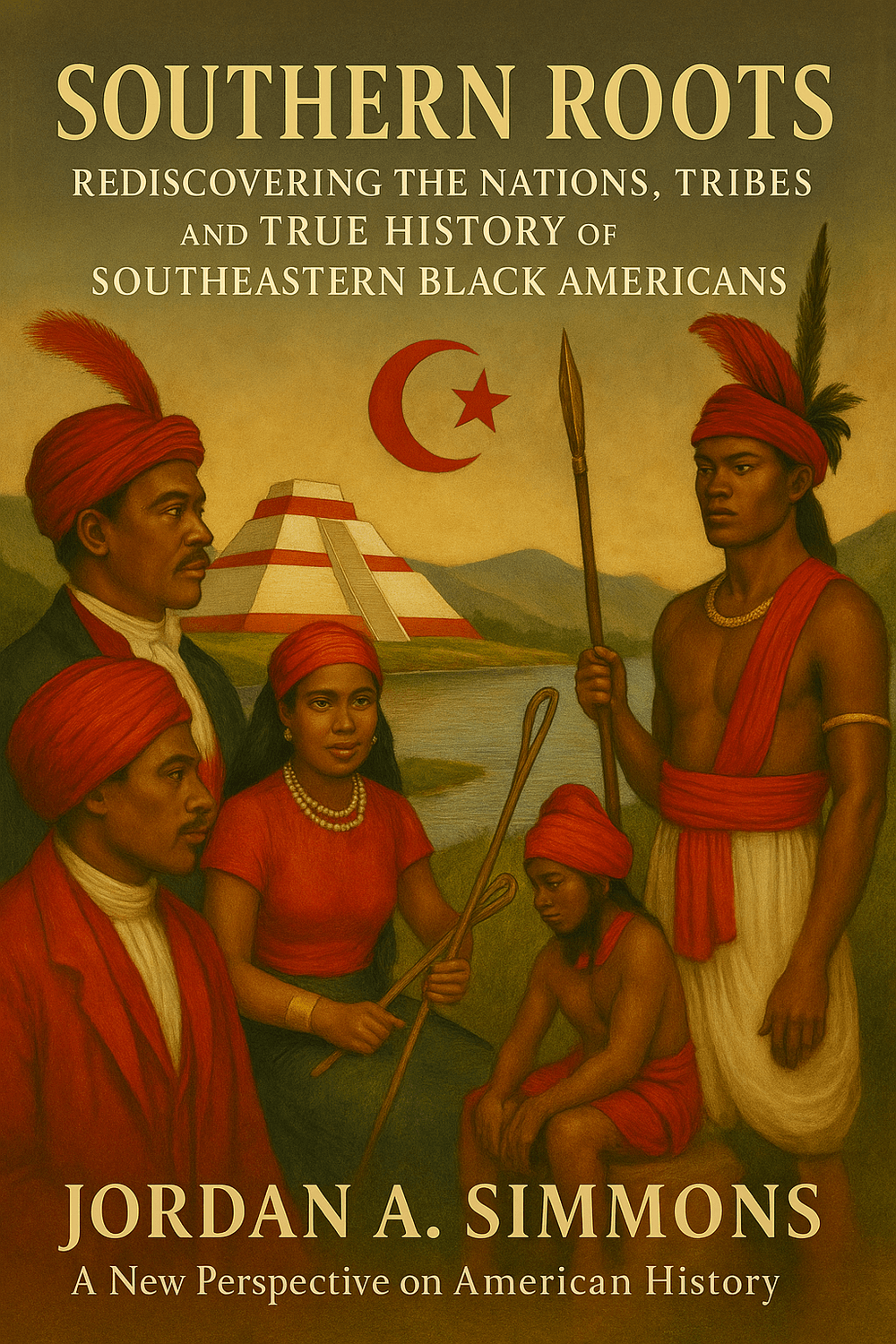The Ancient Roots of the Muscogee: Echoes of an Old World Civilization
“Because the Creek Nation, like the Aryan Hellenes, originated in that part of Ruta called Hell, they were called ‘the Greek Nation.’” — America: The Background of Columbus, p. 93
When we hear the word “Muscogee” today, we often think of it as a tribal name from colonial records — or a synonym for “Creek.” But this name, and the people behind it, carry echoes far older than the American colonies. In truth, the Muscogee stands among the last living expressions of an ancient sacred civilization — one that bridged the Southeastern portion of North America and the ceremonial cultures of Africa, the Mediterranean, and beyond.
Lost Continents and Ancient Priests
In the now-obscure book America: The Background of Columbus, the Muscogee (Mu-sko-gi) are described as descendants of ancient peoples who once lived on sunken lands like Ruta and Daitya — names given to the lost continents of the Atlantic. These civilizations, referred to as Cainites or Tubal-Cainites, were not only metallurgists and architects but also spiritual warriors and ceremonial builders. They carried with them rites of solar alignment, serpent symbolism, and sacred law.
The “Creek Nation”, the book claims, bore similarities to the “Aryan Hellenes” — the Greeks of pre-classical antiquity. Not by coincidence, but by cultural memory. Their towns were built along rivers like the ancient cities of Egypt and Chaldea. Their ceremonial titles and matrilineal clans echo priesthoods from the temples of North Africa to the stone circles of ancient Britain.
According to America: The Background of Columbus, the Muscogee and their Algonquian relatives were known as the Eren-a-peu — a name interpreted to mean “serpents,” or “wise strangers.” But the term itself bears a striking resemblance to another familiar word: European.
Whether by linguistic design or cultural memory, this resemblance invites us to reconsider what “European” once meant. Before the invention of whiteness, many early Europeans — especially those from Iberia, Armorica, and the Scottish Highlands — were described as dark-skinned, Semitic, or Moorish. The term Eren-a-peu may reflect a hidden ancestral link: that the ancient peoples of the Southeast and the early inhabitants of Europe both descended from the same sacred lineage — the Maur.
These were not just serpent-worshippers in myth. They were keepers of sacred law, cosmology, and mound-building knowledge. Their cities aligned with solstices, their symbols encoded celestial order, and their governance mirrored the balance of the stars. The Maur — known across continents by names like Moors, Amaru, and Naacal — carried the ancient sciences from Mississippi to the Nile, from Appalachia to Atlas.
In South American traditions, the plumed serpent (Amaru) symbolized divine wisdom and rebirth. The land itself was called Amaru-ka — meaning “Land of the Plumed Serpent.” Not a New World, but a very old one.
The Muscogee were part of this ancient continuum — a living expression of the serpent-priesthood that once governed both sides of the Atlantic. In this light, Eren-a-pen becomes more than a name. It becomes a key — unlocking a sacred memory long buried beneath empire and racial myth.
Beyond Tribal Labels
European colonizers called these nations “Creek” because of the rivers they lived beside. But the people themselves carried names like Kawita, Kasihta, and Apalachee — names bound to land, law, and lineage. The so-called “Creek Confederacy” was in fact a ceremonial union of sovereign town-nations, each with diplomatic systems, red and white town divisions, and sacred order.
To call them a “tribe” is to erase the complexity of their governance. To say they were “primitive” is to deny the scientific and spiritual inheritance they embodied.
From Atlantis to Georgia: A Sacred Continuum
The book draws an even deeper connection: it places the Muscogee within a sacred continuum stretching from the Atlantean world, through ancient Egypt and Phoenicia, into the Southeastern mound civilizations. These weren't just mythologies — they were encoded in mounds aligned to solstices, symbols carved into gorgets, and the oral law passed through matrilineal gens systems.
Even the name Muscogee may preserve something of this continuity. The book likens the Muscogee to the “Greek Nation,” heirs of the land called Hell — not in the Christian sense, but as a geographic region tied to the sacred compass points of the ancient world.
Reclaiming the Sacred Identity
The Muscogee were never meant to be forgotten. But through conquest, reclassification, and renaming, their ancient memory was buried beneath centuries of distortion. Today, as we peel back these layers, we uncover not only the truth of the Muscogee people — but the deeper truth of America itself.
We are not just descendants of slaves.
We are the children of sacred nations.
We are the roots of the South.
Quote from Southern Roots: Rediscovering the Nations, Tribes, and True History of Southeastern Black Americans
At the forefront of this movement stood the Kawita, a leading political and military force of the Confederacy during the colonial period. Centered in what is now Georgia and Alabama, the Kawita produced leaders like the renowned “Brims” and later Malatchi; statesmen who navigated the colonial world with brilliance. - pg. 41
Read more about the Muscogee in Southern Roots: Rediscovering the Nations, Tribes, and True History of Southeastern Black Americans.
Let us know what you think in the comments!

